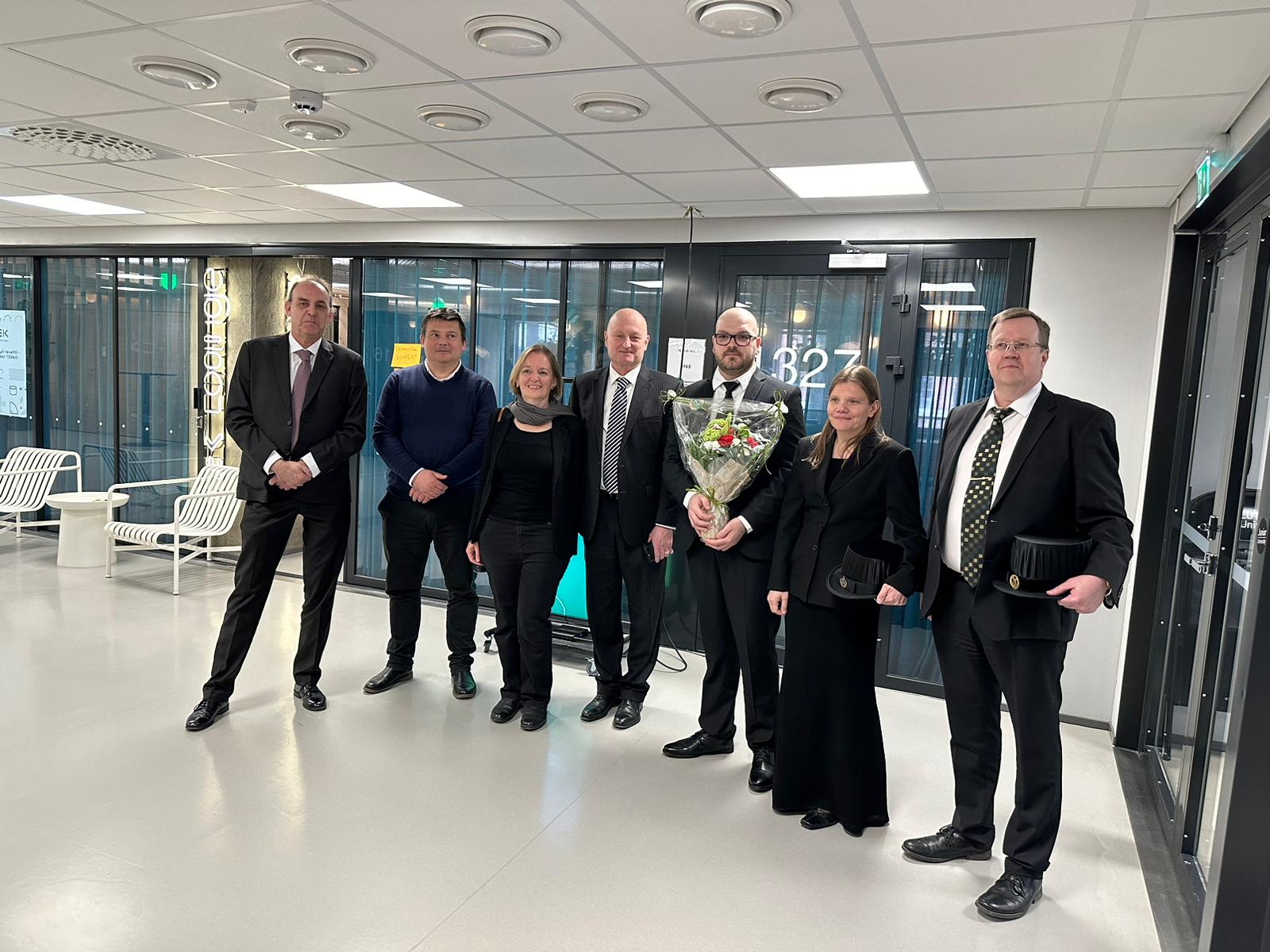PhD thesis defense of Alessio GIOVE
Alessio GIOVE, PhD student at MAPIEM lab, under the supervision of:
- Catherine BRANGER
- Katri LAATIKAINEN
has defended his PhD thesis in Chemistry, on the topic:
on the 19th of April 2024, at noon
in the Auditorium 1318 of the Student Union House at Lappeenranta-Lahti University of Technology LUT, Lappeenranta, Finland
before a jury composed of :
- M. Benjamin CARBONNIER, Professeur des universités, Université Paris-Est Créteil (France), Rapporteur
- M. Antonio MARTIN-ESTEBAN, Directeur de Recherche, INIA-CSIC (Espagne), Rapporteur
- M. Ian NICHOLLS, Professeur des universités, Linnaeus University (Suède), Examinateur
- M. Ari VÄISÄNEN, Professeur des universités, University of Jyväskylä (Finlande), Examinateur
- Mme Katri LAATIKAINEN, Maitre de Conférences-HDR, LUT University (Finlande), Codirectrice de thèse
- Mme Catherine BRANGER, Maître de Conférences-HDR, Université de Toulon (France), Directrice de thèse
Abstract
This doctoral project addressed the challenging separation of Co(II) and Ni(II) ions in hydrometallurgical processes. The experimental work focused on the synthesis of new chelating monomers, the study of their complexes with the target ions and their application to prepare ion imprinted polymers (IIPs). Three new chelating monomers, named PIM-MMA, bis-AMP-MMA, and AMP-MMA, were synthesized using pyridine ligands as precursors. PIM-MMA monomer was excluded from the complex formation study due to its high tendency to homopolymerization. Nevertheless, it was used to prepare Ni(II)-imprinted polymers at varying Ni(II)/PIM-MMA ratios. These materials showed enhanced Ni(II) adsorption capacity when compared to the corresponding non-imprinted polymer (NIP), and a light selectivity for Ni(II) ions, which was however limited. The formation of complexes with Co(II) and Ni(II) ions was studied with both bis-AMP-MMA and AMP-MMA monomers. Both monomers formed 1:2 complexes with Co(II) and Ni(II) ions. In the case of bis-AMP-MMA, these complexes had similar stability constants, while AMP-MMA complex with Ni(II) ions was more stable than the one formed with Co(II) ions. IIPs were prepared with both monomers optimizing the pre-polymerization mixture according to complex formation study results. Bis-AMP-MMA-based adsorbents were characterized by poor selectivity in the separation of Co(II) ions in presence of Ni(II) ions. Conversely, the Ni(II)-IIP based on AMP-MMA (AMP-Ni-IIP) exhibited high selectivity for Ni(II) ions in presence of Co(II) ions. These selectivity study results aligned with those of the complex formation study for both monomers and highlighted the importance of optimizing metal/chelator complexes to prepare highly selective IIPs. Additionally, the adsorption capacity of AMP-Ni-IIP in both neutral and acidic media (169.5 mg/g at pH 7 and 138.9 mg/g at pH 2), combined with its selectivity for Ni(II) ions, provided a valuable alternative for the selective separation of Ni(II) ions in hydrometallurgical processes.
Keywords
Adsorption, selectivity, ion imprinted polymers, nickel, cobalt, hydrometallurgy



